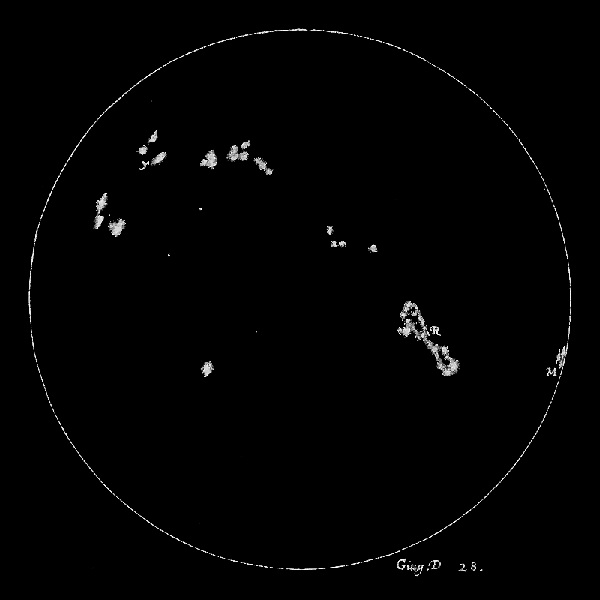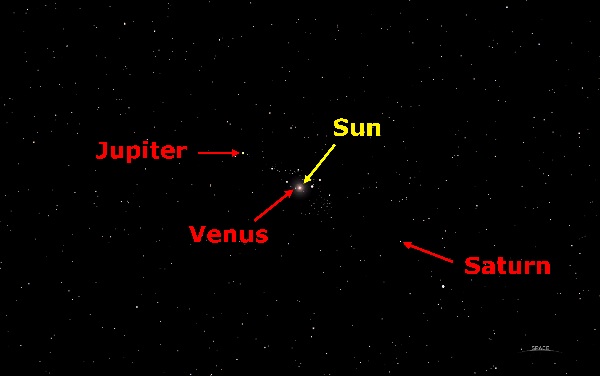Different Views of the Sun
The Sun follows different paths across the sky, but what does the Sun itself look like?
VISUAL 4 (still): Galileo Sketch of Sunspots
[Toggle an image of Galileo’s telescopic view of the Sun.]

Long ago, many people assumed that the Sun was a perfect glowing sphere, but when Galileo first looked at the Sun with his telescope (which you should never, ever do without proper protection), he discovered something shocking—spots! The Sun is not perfect after all—it has blemishes on its surface.
VISUAL 5 (still): Pluto Encounter Panoramic View
[Toggle an image of an artist’s conception of Pluto’s view of the Sun.]

Pluto is almost 40 times further from the Sun than Earth. In this artist conception of the arrival of the New Horizons mission to Pluto, the Sun appears merely as the brightest star in the sky—similar to how bright Venus looks to us in the sky here on Earth.
VISUAL 6 (still): Voyager’s View of the Solar System
[Toggle an image of a re-creation of Voyager’s view of the Sun (and solar system)].

When the Voyager probes moved beyond the orbit of Pluto, this is what their view of the Sun was. The planets are barely visible, and the Sun looks simply like a brighter version of the many other stars seen here.
[Fade off all visuals. Only stars showing.]
When we look out into the night sky, we can see the biggest and the brightest of the stars in our galaxy. Most of those we see without telescopes are giant stars and supergiant stars.
How many stars do you think are really Sun-like?
[With the naked eye, we can only see 3 or 4 truly Sun-like stars.]
Stars can be very young or very old, very dim or very bright, and a wide range of colors. Our Sun is a yellow star of average size, and is in the middle of its life cycle.
VISUAL 7 (movie): Satellite Imagery of the Sun Montage
[Later video clips in this show may also have associated playback and chapter functions.]
[End movie.]

